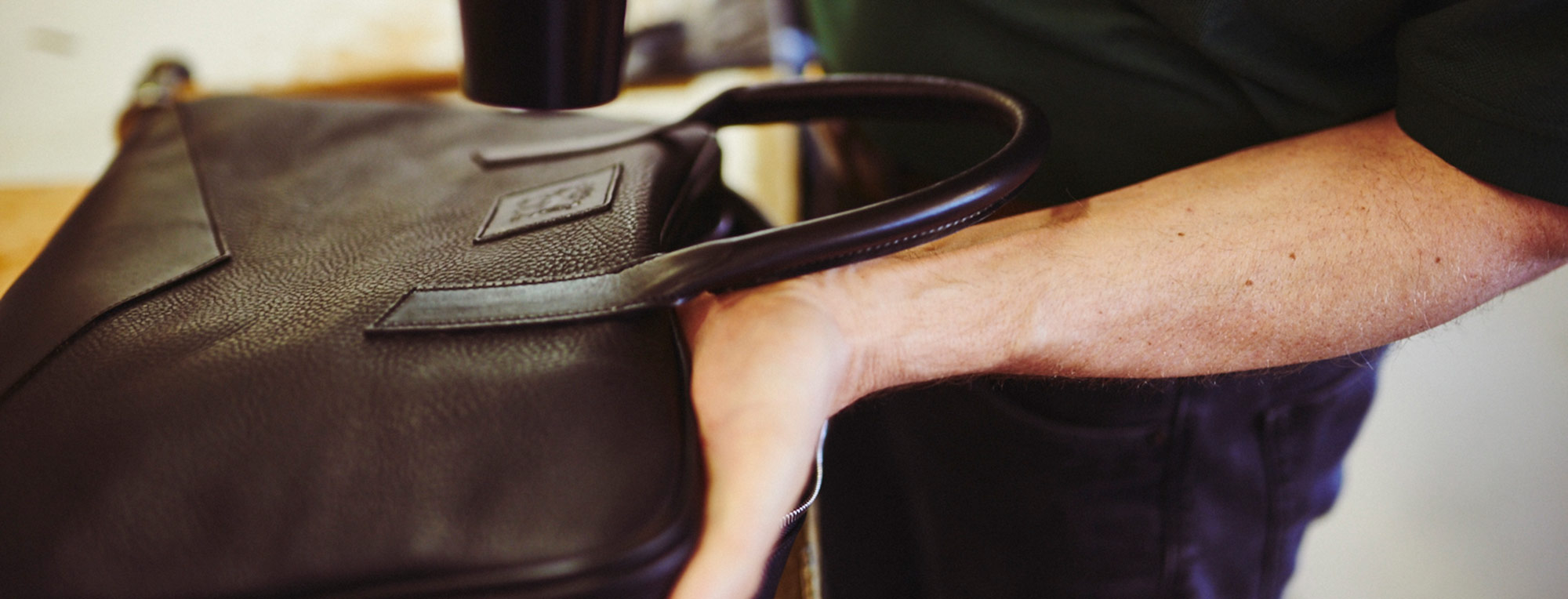Looking After Your Leather Bag: Four Top Tips
We are often asked for advice on how to look after the leather in Tusting bags. Happily, because they are all made of premium, full-grain leather, they are inherently robust and will survive quite well without too much fuss. However, like all of us, they thrive on receiving a little loving care from time to time, and here we offer our four top tips to help you.
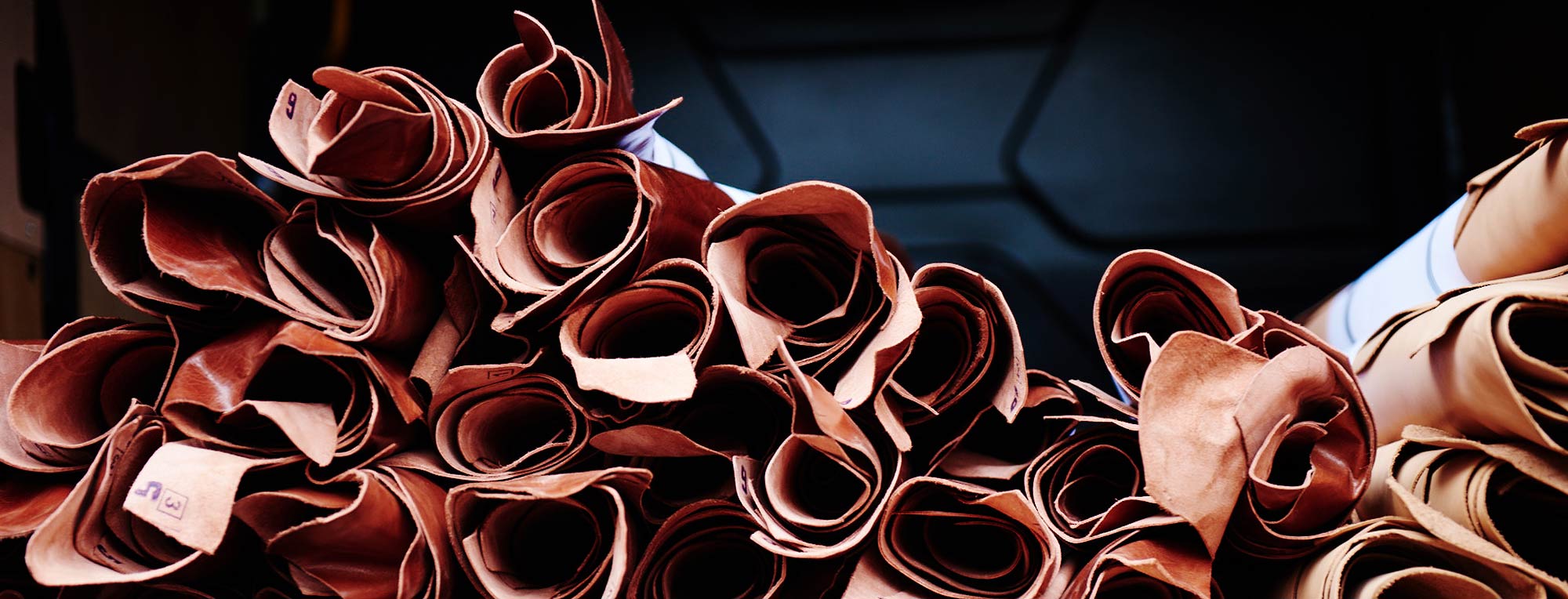
1. Keep it Clean(ish)…
From time to time, damp a clean cloth or sponge in water and gently clean the surface of your bag. If it requires more active cleaning, add a little gentle soap liquid to the water, wiping over afterwards with a soap-free rinse to finish. (We favour a cellulose sponge for this job – they are natural and non-scratch but effective.)
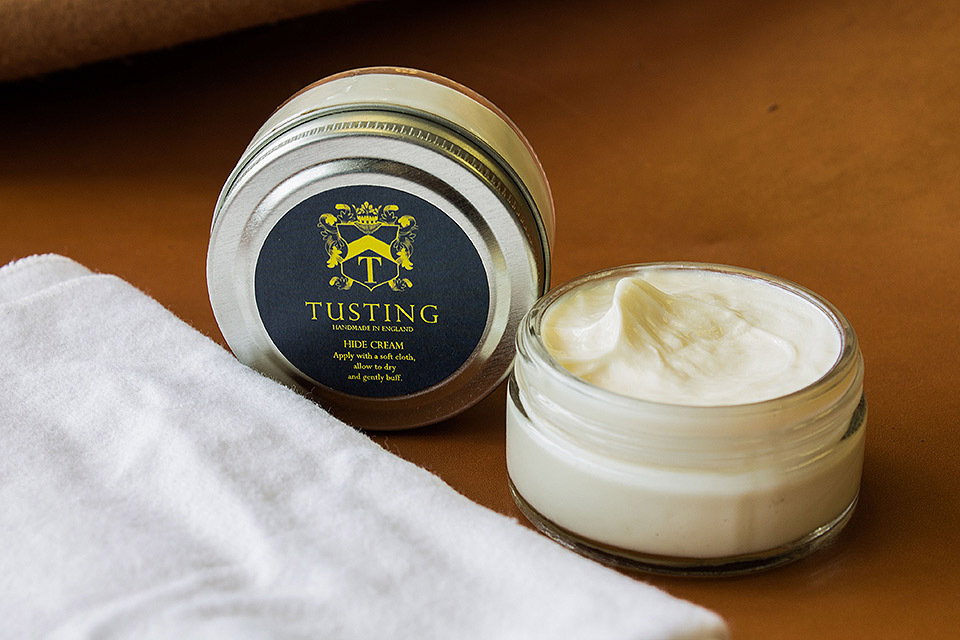
2. Feed it a little…
Our leathers need little fuss, but regular and sparing use of our Hide Cream keeps them supple and replaces oils lost with everyday use. Our Hide Cream is good on all our full-grain leathers (not on suede though) although it is certainly not the only leather care you can use. In general, avoid anything very oily as this may darken the leather permanently. For more precise information about each of our leather types, please scroll down.
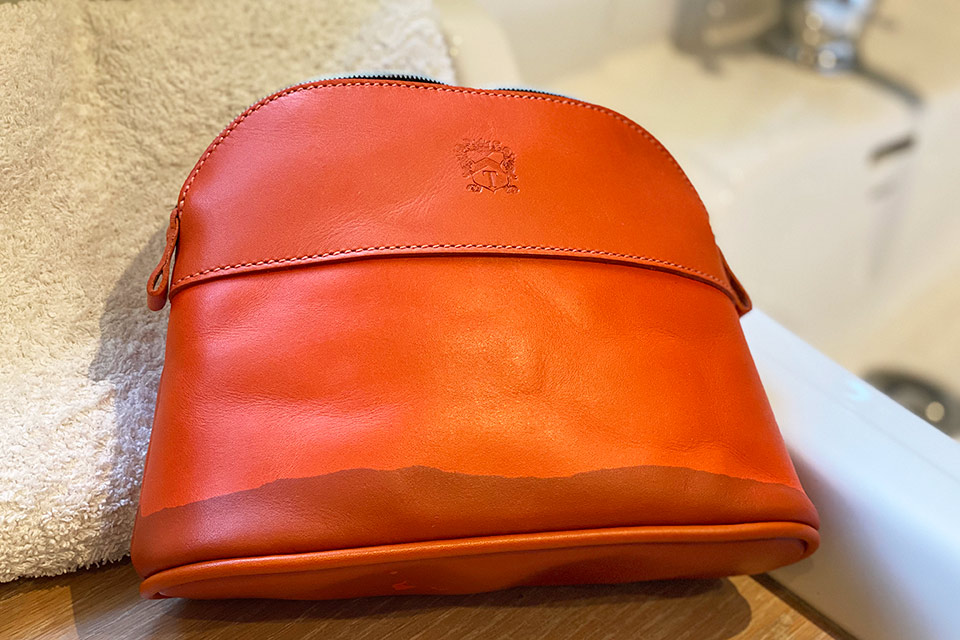
3. Getting wet…
Avoid getting your bag wet if at all possible, but if you do get caught in the rain or spill water on your bag, don’t panic, leather is pretty robust stuff. Wipe the bag over with a damp sponge or cloth to help prevent tide marks, and allow to dry naturally away from a direct heat. Some Hide Cream when the drama is over will soothe the leather back to full health. Read our post on water spills for more information and photos of a real-life crisis dealt with.
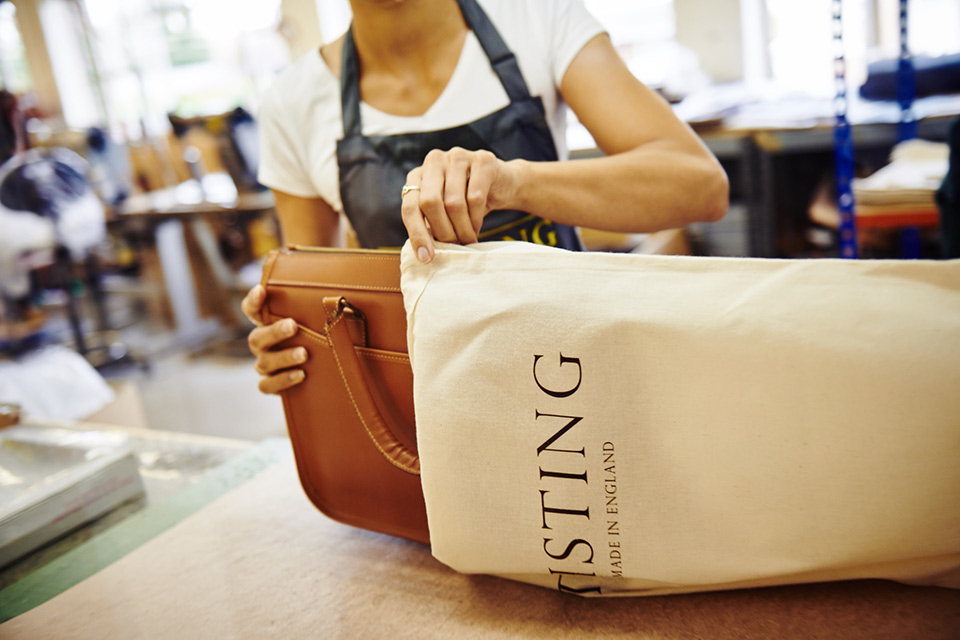
4. When not in use…
When not in use, it is best to store your Tusting bag in the cotton outer bag provided. This will not harm the leather the way wrapping it in plastic could – and helps to keep dust and dirt off the leather. It will also keep light from fading its colour – please take care not to leave your bag next to a window or other strong source of light or heat – all premium leathers will tend to fade or discolour in strong light and too much direct heat can shrink the leather, especially if damp.
How to look after your leather
Follow our expert tips and watch Gillian Tusting’s easy 3-step masterclass in caring for your leather bag.
A little more detail
Our various different leathers age individually and benefit from slightly different care regimes through their lives, so here is a little more detail on their individual characteristics.
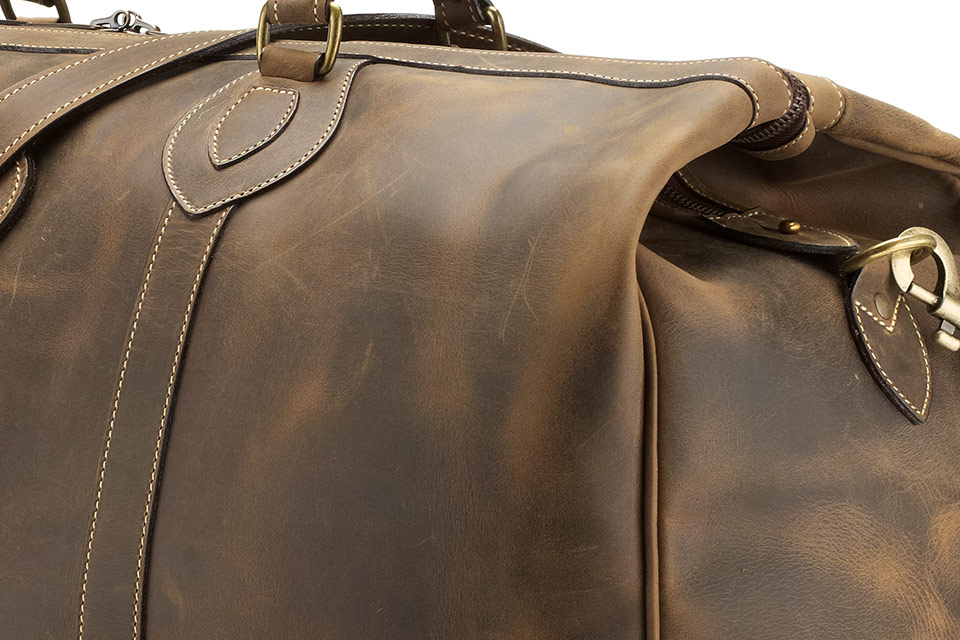
Sundance and Crazyhorse
Our signature leathers for both briefcases and luggage, these are pull-up leathers where the underlying colour of the leather is lighter than the colour of the wax used to dress it. This special tanning technique gives the characteristic lighter colouring where the leather bends and creases, and also if it is scratched. Because they do not have any kind of top coating or polish, almost all scratches can be easily rubbed out of these leathers. The warmth of your fingers will bring the waxes to the surface and fill the scratch. Deeper scratches can be helped with the hot air from a hairdryer whilst you rub.
In time, most hide creams or leather dressings, including our own, can be used on Floodlight and Crazyhorse, but it will only be of benefit after the surface has settled and if it really looks like it needs some feeding. When the time comes, which may be some years after purchase, you have the choice of a light dressing with our Hide Cream, or a deeper feeding with a good-quality waxy dressing. Again, the surprising power of a hairdryer can be used to soften the waxes all over and leave your bag looking considerably refreshed.
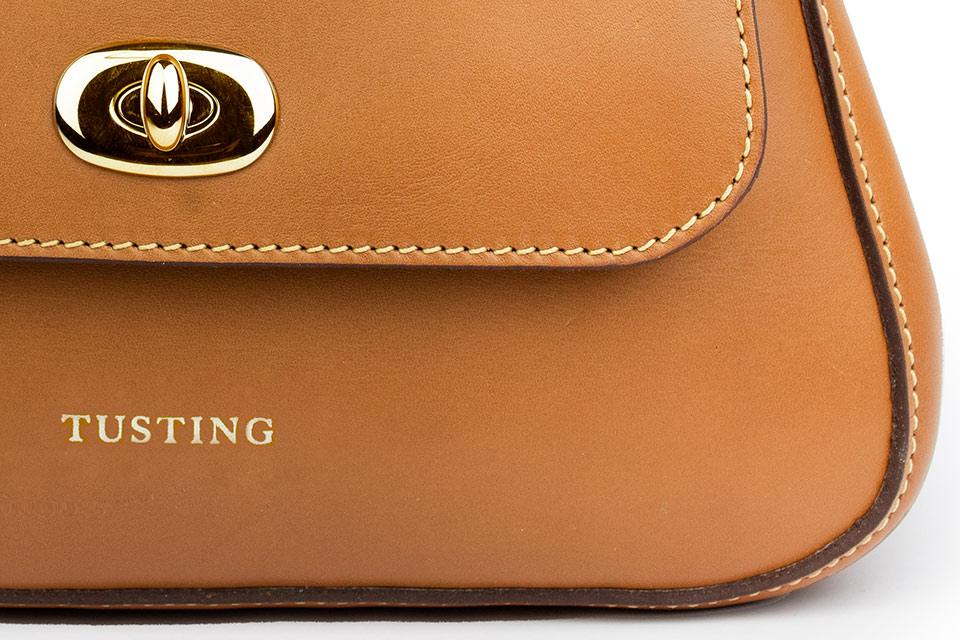
Atlantic
Our Atlantic leather is a wonderfully forgiving blend of traditional and modern in terms of the tanning technologies which go into making this softly glossy leather. The full-grain hides are polished but not overly dressed so that the beauty of the grain is still very evident. Care is simply a matter of wiping the polished surface of this leather clean and occasional polishing with a very scant amount of our Hide Cream or other light cream polish – it is not a candidate for a waxy treatment.
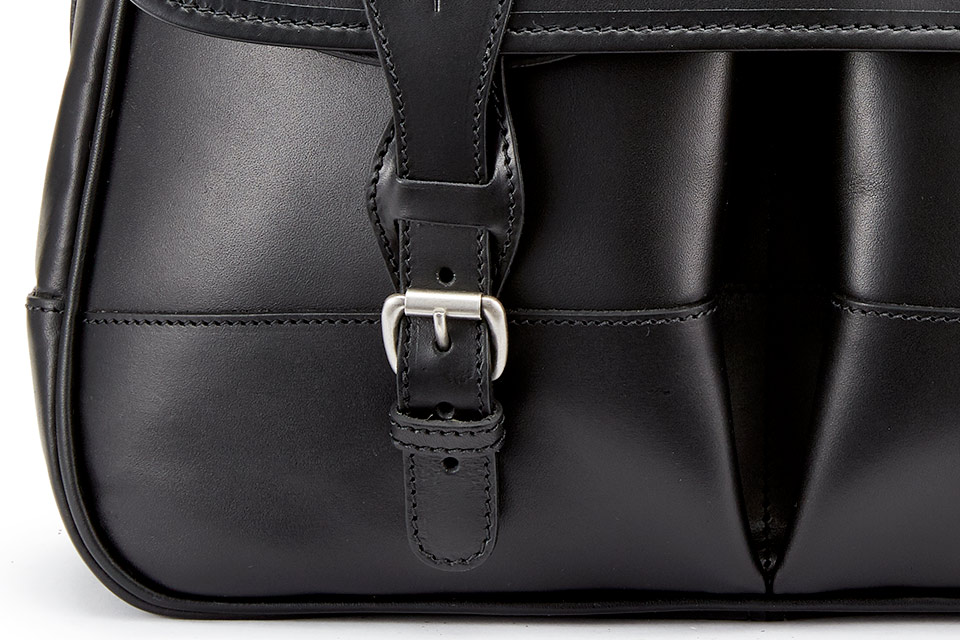
Bridle Leather
Care should be taken with vegetable-tanned leathers as oily polishes will tend to darken the leather – stick to a wipe clean and treat with our Hide Cream or other hard wax polish. For this type of leather, besides our own Hide Cream, we like Renapur wax which provides a good waterproofing treatment.
Bridle leather is tanned with solid waxes which may, when cold, appear as a white ‘bloom’ on the surface of the leather. This is a characteristic of Bridle and can be either enjoyed as a look in its own right or polished back into the leather. Hot air from a hair dryer will soften the wax and allow any excess to be polished off, leaving a stunning shine.
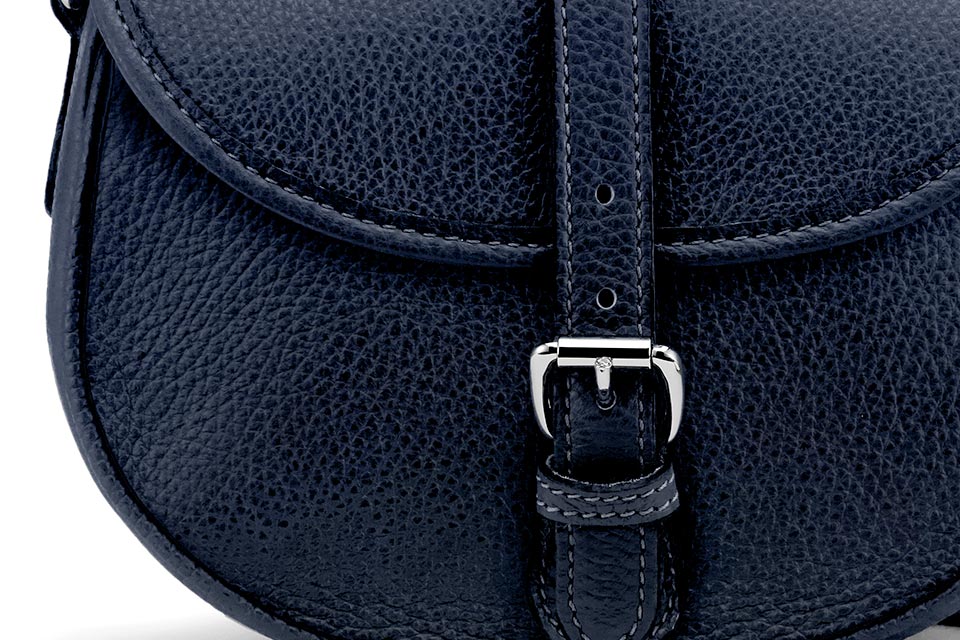
Pebblestone
The special finishing process of applying a thick polish and then tumbling this leather slightly thickens and shrinks the grain and leaves the distinctive pebbly surface. The irregular finish is particularly resilient to the rough and tumble of daily life and will need only a wipe clean and a very scant application of our Hide Cream to brighten it up.

